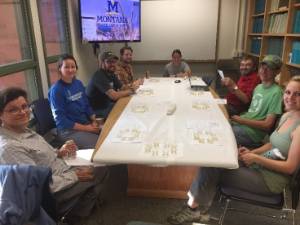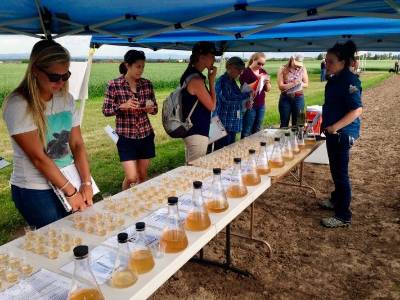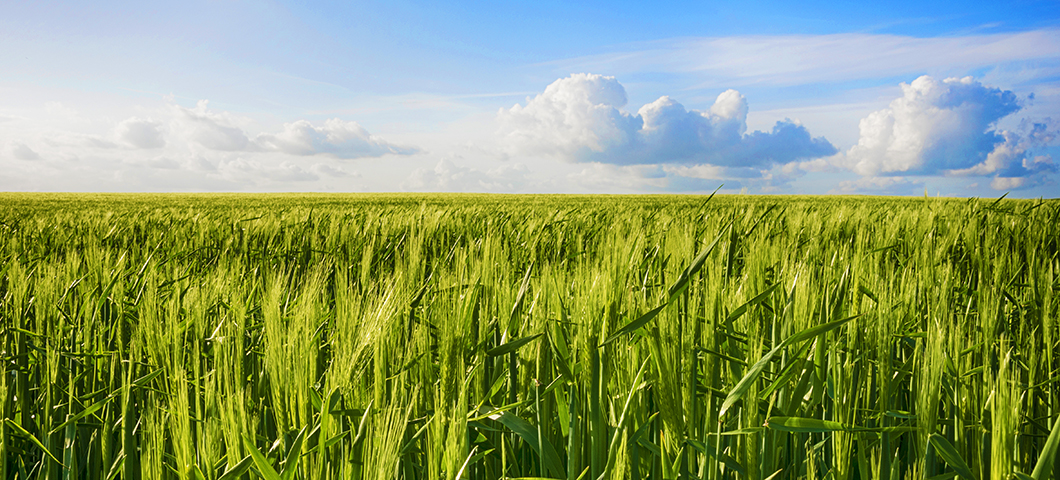Heirloom Flavor
By Hannah Turner
World-wide and world-class, heirloom barleys are studied at Montana State University to support craft brewing
Have you ever heard a brewer describe the sought-after Maris Otter malt, or perhaps Golden Promise? Did you know that these two are heirloom barley varieties, and some of the only malts named for their variety not the type of malting process they have undergone? Many craft brewers have a shared sentiment: something has been lost flavor wise in modern malting barley varieties. To understand this, you must consider the history of barley breeding in North America. Efforts to specifically improve barley malting quality began shortly after World War II. For decades adjunct brewing methods have been king and that has pushed breeding efforts toward selection of lines with high enzymatic and yeast nutritive capacities, qualities that are low in grains like rice and corn. This means breeders have been focused on these specific traits; not considering flavor it may have been inadvertently lost. This led Jamie Sherman, our barley breeder at Montana State University, to seek out heirloom lines from across the world so that we may learn what flavor potential can be re-discovered.
Jamie started by hitting the books, reviewing lineages of lines like Maris Otter and Golden Promise in historical records. She then requested seed from storage banks such as the Germplasm Resources Information Network (GRIN, ars-grin.gov). All in she collected over 300 unique lines representing 42 different countries of origin. With a defined project in mind Jamie also garnered support for the work via a $300,000 USDA grant, and partnered with Colorado State University to form the Rocky Mountain Malting Barley Cooperative, an initiative to investigate the question of varietal flavor. The USDA funds also allowed Jamie to bring on a PhD candidate, Joseph Jensen, to focus on conducting this research.
The first step was to grow all 300 lines. It took several years, and we found the variation of the genetically diverse plants to be significant line to line. We affectionately called this trial “the museum” as looking across the plots you would find short and tall, deep green to light foliage, hulled and hull-less, purple, black and pale grains, awned, awn-less, 6 and 2-row heads among other unique traits. Each year we collected key agronomic data for the lines, then meticulously harvested and brought them to the lab for malting. We found the plant variation to be well matched by the variability of malt quality, with some lines having similar quality to modern day varieties. All that information gave us a great picture of the trial in a traditional sense, but we had yet to taste anything.
Theoretically it made sense that there would be varietal flavor differences, after all, think about other culinary crops like apples which have such wide varietal variation. In preparation for our first presentation, a talk for the Montana Brewers Association in 2017, we hedged our bets and taste tested 30 prominent lines to prove to ourselves that there were differences. Tasting involves a method recently approved by the American Society of Brewing Chemists (the Hot Steep), which is essentially makes a malt tea. Granted, 30 lines was too many to taste at once, and our novice palates were not ready to offer specific descriptions, but we were certainly able to discern distinct flavor differences line to line.
Knowing differences existed the next step was to send malts to CSU for chemical profiling. Sensory science is on the cutting edge of malt knowledge and this work aims to first identify what compounds exist in the unique varietal malts, then to pair that information with what brewers find desirable. We also plan to brew with select lines to identify how that flavor may carry through. Needless to say, this project is broad in scope and will take a significant amount of time to fully explore. Adding another aspect to the project, we have genetic sequencing for many of the heirloom lines, which we hope will allow us to make direct breeding selections for desired flavors down the line.
To access presentations we have given on this work thus far, and to get a full list of the lines included in this work, head on over to ourwebsite to see our new malt-variety-dictionary So far lines included in this work are proving to be interesting for malting quality traits including wide variations for malting and chemical profiles, variation of endosperm hydration speed during malting (this is important for a maltsters bottom line and effects starch/sugar composition which impacts flavor), and variation in the amino acid composition (which could affect final beer flavor). We are getting close to publishing some very interesting findings – so be sure to follow us on Facebook and Instagram for updates! @msu.barley.malt.quality.lab
 Early wort tasting with the MSU Barley Team. Jamie Sherman at front left and Joseph Jensen in green on the right. |
 Brewers evaluate heirloom Hot Steeps at the MT Brewers Association meeting in Missoula |
 Field day wort tasting. We were so excited to showcase hot steeps of 12 different varieties right next to where they grew in the field! |

Colorful barleys highlight some of the unique variation found in our heirloom study. |

